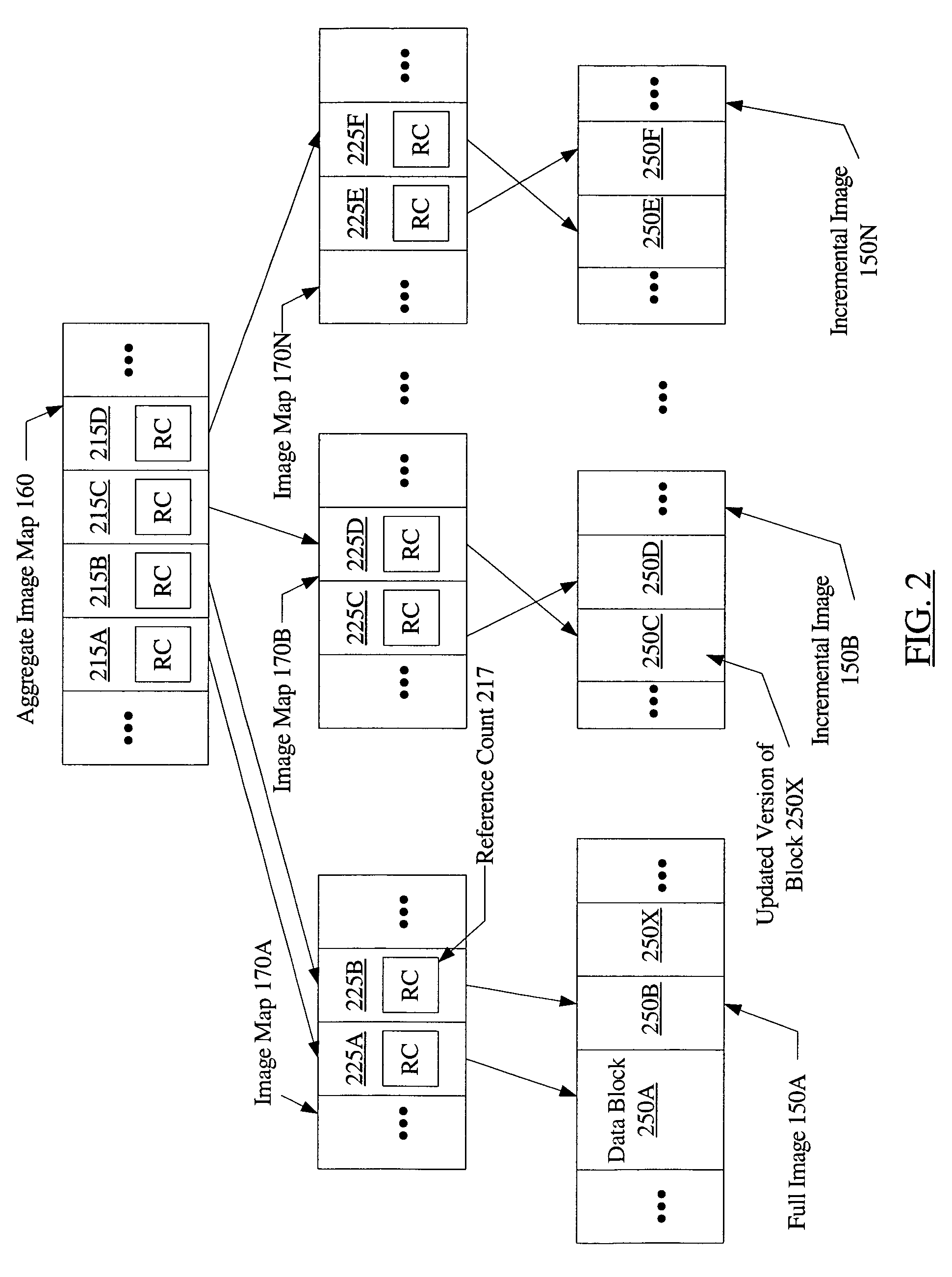System and method for efficient creation of aggregate backup images
a backup image and aggregate technology, applied in the field of computer systems, can solve the problems of reducing the frequency at which full images are created, affecting the efficiency of backup image creation, and affecting the quality of backup images, so as to reduce the amount of storage used for storing redundant or obsolete backup images
- Summary
- Abstract
- Description
- Claims
- Application Information
AI Technical Summary
Benefits of technology
Problems solved by technology
Method used
Image
Examples
Embodiment Construction
[0025]FIG. 1 is a block diagram illustrating a system 100 according to one embodiment. As shown, system 100 includes a plurality of backup images of a source data set 115 including a full image 150A and incremental images 150B, 150C, . . . 150N (which may be collectively referred to herein as backup images 150), and a backup manager 120. Source data set 115 may include a variety of logical and / or physical storage devices 110 (i.e., 10A . . . 10N) of which backup images may be created, including, for example, one or more file systems, individual files, raw devices, logical volumes, database storage devices such as tablespaces, or LUNs (Logical Units). Full image 150A may include a version of all the data blocks within source data set 115, while incremental images 150B, 150C, . . . 150N may each include only a subset of data blocks of source data set 115, each incremental image reflecting changes made to the source data set 115 since the immediately previous (fill or incremental) back...
PUM
 Login to View More
Login to View More Abstract
Description
Claims
Application Information
 Login to View More
Login to View More - R&D
- Intellectual Property
- Life Sciences
- Materials
- Tech Scout
- Unparalleled Data Quality
- Higher Quality Content
- 60% Fewer Hallucinations
Browse by: Latest US Patents, China's latest patents, Technical Efficacy Thesaurus, Application Domain, Technology Topic, Popular Technical Reports.
© 2025 PatSnap. All rights reserved.Legal|Privacy policy|Modern Slavery Act Transparency Statement|Sitemap|About US| Contact US: help@patsnap.com



